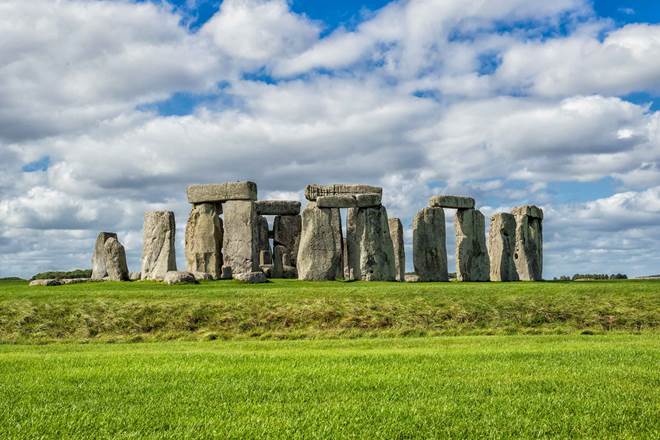English Heritage

Exploring English Heritage: Preserving the Past for Future Generations
English Heritage plays a vital role in protecting, preserving, and promoting the rich historical legacy of England. From ancient castles and Roman ruins to stately homes and iconic landmarks, this organization safeguards over 400 historic sites across the country. But English Heritage is more than just buildings — it tells the story of England’s people, culture, and identity.
What Is English Heritage?
English Heritage is a charity that manages the National Heritage Collection – a diverse range of historic sites that span over 6,000 years of history. These sites include:
- Stonehenge
- Hadrian’s Wall
- Dover Castle
- Osborne House
- Tintagel Castle
Originally established as a government body in 1983, English Heritage became a charitable trust in 2015. Today, it is funded through memberships, donations, grants, and visitor income.
Why English Heritage Matters
The work of English Heritage is essential for several reasons:
1. Conservation of History
Many ancient sites face threats from weather, pollution, and time. English Heritage restores and maintains these places so future generations can experience them.
2. Education and Learning
The organization offers educational resources for schools, families, and researchers. With guided tours, historical reenactments, and digital content, learning history becomes engaging and accessible.
3. Tourism and Economy
Historic sites attract millions of visitors each year. English Heritage contributes significantly to local economies through tourism, jobs, and community events.
Iconic Sites Under English Heritage
Let’s take a look at some well-known landmarks cared for by English Heritage:
Stonehenge
One of the world’s most famous prehistoric monuments, Stonehenge continues to fascinate visitors and archaeologists alike. English Heritage manages the site and the visitor centre, offering insights into its mysterious origins.
Hadrian’s Wall
Stretching across Northern England, Hadrian’s Wall is a UNESCO World Heritage Site built by the Romans. It remains a powerful symbol of Roman Britain.
Dover Castle
Known as the “Key to England”, this fortress played a crucial role in defending the realm throughout history. It features underground tunnels used during World War II.
How You Can Support English Heritage
There are several ways to support the mission of English Heritage:
- Become a member: Enjoy unlimited access to hundreds of sites, free entry, and exclusive events.
- Donate: Help fund restoration projects and educational programs.
- Volunteer: Join thousands of people who help care for historic locations.
Your involvement ensures that these treasures remain for future generations to explore and appreciate.
A Living Link to the Past
In a rapidly changing world, English Heritage offers a sense of continuity. By protecting ancient structures, sharing untold stories, and making history come alive, it keeps England’s past relevant and inspiring.
Whether you’re a history lover, a student, or just curious about the places that shaped a nation, English Heritage provides a unique opportunity to connect with the past.
Final Thoughts
English Heritage is more than a caretaker of buildings — it’s a guardian of stories, culture, and identity. Through its efforts, England’s historical landmarks are not only preserved but celebrated. Visiting these sites or supporting the cause means becoming part of a journey that spans centuries.
Absolutely! Here’s a unique, informative FAQ section to go along with the article about English Heritage. These questions and answers are designed to be helpful, easy to read, and naturally include your target keyword.
Frequently Asked Questions about English Heritage
1. What is English Heritage?
English Heritage is a charity that manages over 400 historic sites across England, including castles, abbeys, houses, gardens, and monuments. It works to conserve these sites and share their stories with the public.
2. How is English Heritage funded?
As a charity, English Heritage is funded through a combination of membership fees, visitor income (such as ticket sales), donations, grants, and some government support. It uses this income to care for and restore historic sites.
3. What kind of places does English Heritage manage?
English Heritage looks after a wide variety of locations, including:
- Prehistoric monuments like Stonehenge
- Roman sites such as Hadrian’s Wall
- Medieval castles like Dover Castle
- Elegant stately homes and gardens
- Industrial and military heritage sites
4. Can I visit English Heritage sites?
Yes! Most English Heritage sites are open to the public. Some are free to enter, while others require a ticket. Members get free unlimited access to all sites managed by the organization.
5. What are the benefits of English Heritage membership?
Membership includes:
- Free entry to over 400 sites
- Discounts in on-site shops and cafes
- Exclusive members-only events
- A quarterly magazine
- Free entry for up to six children with each adult member
6. How can I support English Heritage?
You can support English Heritage by:
- Becoming a member
- Making a donation
- Volunteering your time
- Visiting sites and spreading awareness
Your support helps protect England’s historic places for future generations.
7. Is English Heritage the same as National Trust?
No, English Heritage and the National Trust are separate organizations. Both care for historic sites, but English Heritage focuses more on ancient monuments and specific listed buildings, while the National Trust also manages countryside, coastlines, and more properties.
8. Can schools or educational groups use English Heritage resources?
Yes! English Heritage offers a wide range of educational resources, including free learning packs, workshops, and school visits to historic sites. It’s a valuable resource for both teachers and students.
9. Does English Heritage do archaeological work?
Absolutely. English Heritage supports and conducts archaeological research at many of its sites. This helps uncover new details about England’s past and ensures historically accurate preservation.
10. How do I find an English Heritage site near me?
You can visit the official English Heritage website and use the interactive map to discover historic places near your location. Sites are spread all over England, from rural villages to major cities.




